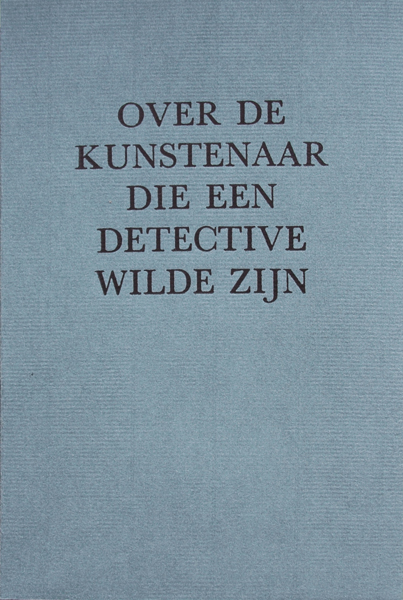In Take Care of Yourself (2008), French conceptual artist Sophie Calle takes us, the spectators and readers back in time, browsing through archives with twenty year old photos and letters, she goes looking for relatives, friends and ex-lovers with whom she lost contact.
She openly shares her sensitivity for filling in loneliness by tracking down those she used to cherish. Intrigued by her findings, she shifts the idea of the existence of complete solitude and anonymity by investigating what nowadays keeps people busy, too busy to stay in touch with loved ones from the past.
Calle records not only her own hidden vulnerabilities but also those of others. Eagerly she tries to comprehend and researches how people function in their relationships, arbitrary household tasks, work, social life and endless attempts to realize fantasies. She cleverly visualizes this by contacting twenty people from her past that are willing to give her one week to document their private, present lives. Taking photos, films, recording voicemail messages, browsing through personal items, collecting letters, creates a different image of every single individual that Sophie follows. All the information that she collects is divided per person and sometimes unexpectedly forms new identities while she compares the knowledge that she has, knowing them from the past with the knowledge that she gathers from the present.
The contrast that occurs between the history of the individuals and their current whereabouts gives room for the viewers to construct and interpret an invisible timeline.
Questions arises why Sophie Calle and some of her back-in-the-days loved ones have grown apart. For some there appears to be an obvious explanation, for some there doesn’t seem to be a clear one. Calle genuinely reflects her own life upon those she documented and searches for answers and interpretations about how people become individual, independent and eventually form an identity. What influences one to alter its path? Why do people grow apart and accept the fact that we do? How do we look back on memories? How do we take care of ourselves and how have others?
Not only does “Take Care of Yourself” contain a lot of intimacy and interaction, it also makes us wonder what the saying: “Take Care of Yourself” actually means. While we speak out those four words, knowing that you won’t see each other any time soon, the meaning changes and makes you realize that taking care of yourself, can make you feel a little bit lonely, sometimes. Calle seeks and finds comfort in the final results she obtains, knowing that her former loved ones have been taking care of themselves.
In this book conceptual artist Sophie Calle works with the same delicacy and media as how she did in “Did You See Me?” (2007). Where she merely approached strangers back then, she this time approaches people that have become estranged from her. Her fine touch and assertive working method have an inspiring and consoling effect on every reader.
this post is part of he subjective library project "Unopened Book"
the book can be found at the Rietveld library : catalog no : -call-2



